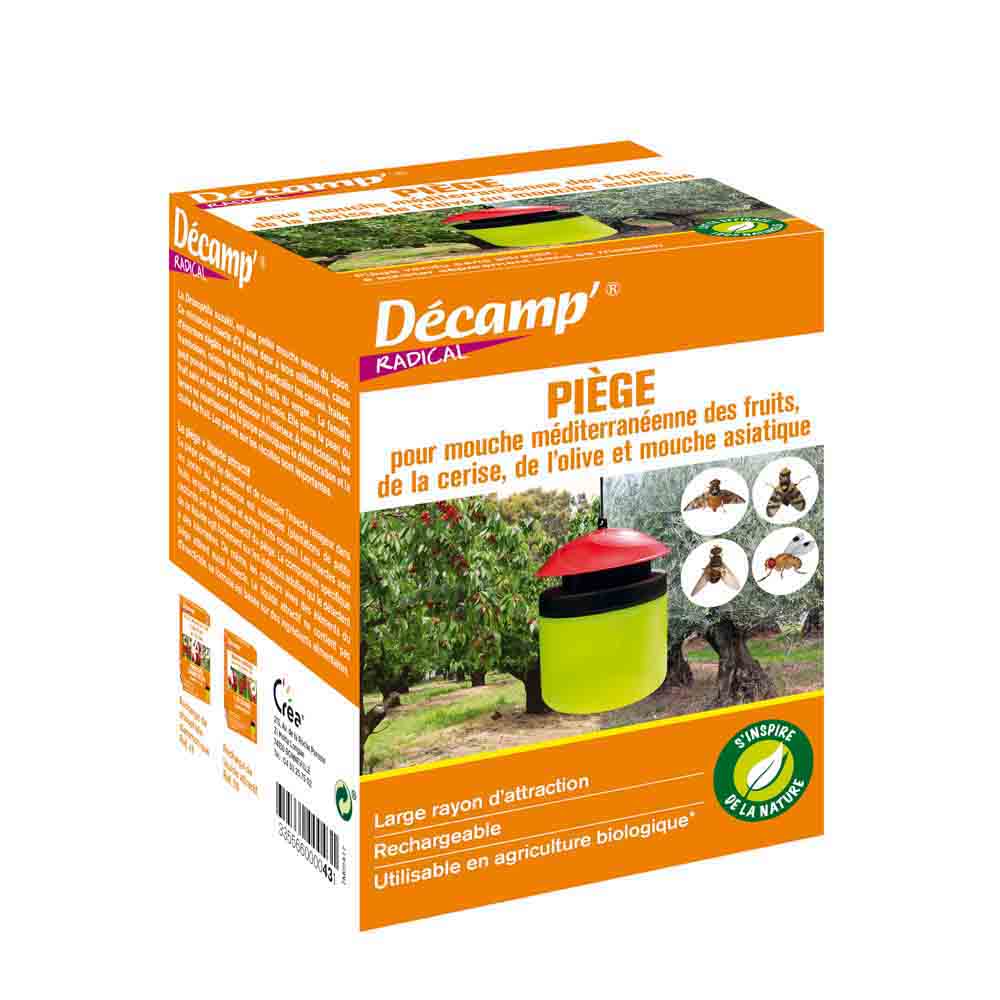TRAP FOR CHERRY, OLIVE, MEDITERRANEAN FLY
The fruit fly trap helps fight against the cherry fly, olive fly, Mediterranean fly or Asian fly. Trap only, attractants sold separately. This trap is refillable. It is a 100% natural solution to fight against pests. The trap is combined with the diammonium phosphate attractant 6376C to fight against Mediterranean fruit flies, cherry flies, olive flies. This trap can also be used in combination with the attractive liquid 6377C to fight against the Asian fly. The Mediterranean fly: The Mediterranean fruit fly (ceratitis capitata) is a species from sub-Saharan Africa. Very present in the Mediterranean regions, this insect pest causes damage to many fruit crops: citrus fruits, peaches, kiwis, avocado trees, medlar trees, plum trees, apple trees, etc. Trapping period: from April to July. Cherry fly: The cherry fly (rhagoletis cerasi), once fertilized, lays its eggs under the skin of the fruit. The larva is born and then develops in the fruit, causing damage: soft flesh, browning, cherry fall. Trapping period: from April to July. Olive fly: The olive fly (bactrocera oleae), once fertilized, lays its eggs under the skin of the fruit. The larva is born and then develops in the fruit, causing damage: eaten pulp, rot, olive fall. Trapping period: from May to October. Asian fruit fly: Drosophila suzukii is a small fly from Japan. This tiny insect, barely two to three millimeters long, causes enormous damage to fruit, particularly cherries, strawberries, raspberries, grapes, figs, kiwis, and orchard fruits. Trapping period: from April to August. How to use the trap? There are two modes of action: - detection trapping which allows you to monitor pest flights and treat immediately as soon as the first insects appear, - mass trapping which allows you to eliminate a large number of insects and limit populations. The trap is used in addition to an attractant, either liquid or powder (sold separately). The insects are attracted to the trap and are thus captured by the liquid. 1. Place the attractant in the trap. Pour the liquid or dilute the powder (sold separately) into the trap container. 2. Screw the lid on the container. 3. Insert the fastener provided into the hole in the lid provided for this purpose. Hang the trap from a branch or a post at a height of approximately 1 to 1.5 m in shaded areas. Inspect the trap every 3-4 days and if necessary add attractant liquid so that the container is constantly filled to about 1/3 of its volume. Do not empty the liquid from the trap directly into the plantation or its surroundings;









